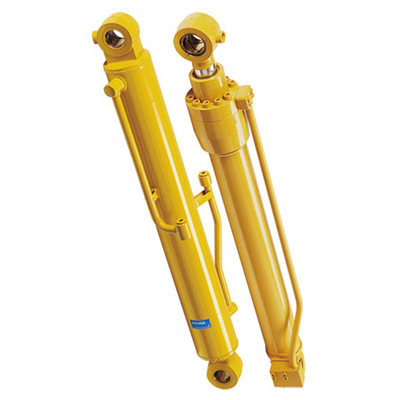Because you use your excavator for heavy loads and demolition within any type of harsh environment, you will need hydraulic cylinders for excavators that are strong enough to withstand any kind of pressure. To ensure that our hydraulic cylinders are strong enough for all varieties of excavators, we, as trusted excavator hydraulic cylinder suppliers, only sell the highest quality cylinders. In this post, we will show you related types of cylinders for excavators firstly.
Main Types Of Excavator’s Cylinder
About lift cylinders
Your lift cylinder must be in optimal condition to effectively lift your materials. The arm is responsible for its movement, which is connected to the machine’s work when lifting materials. The hinged joint is what connects the boom arm cylinders to the arm of an excavator. What you picture is an arm.
The excavator’s bucket cylinder
hydraulic cylinders for excavators bucket are incredibly hardworking, as they are responsible for tilting the bucket and any other accessory mounted on the quick coupler. The bottom of the arm on your excavator has another hinged joint that attaches to the bucket. Located on the outside of the arm, the bucket cylinder allows the bucket to pull inwards to lift dug material and extend to tip, releasing the material. Buckets of various shapes and sizes can be used to cut through different types and volumes of waste. If you want your excavator to function with strength and ease, it is essential that your lift cylinder operates at full capacity.
Designed boom arm cylinders
A boom arm cylinder’s hydraulics serve a similar purpose to the muscles in an arm. At the same time, it allows the excavator to achieve digging movement. Using the controls, you can accurately excavate by positioning your bucket to successfully isolate the desired materials and carry out the task effectively. The boom and arm are connected, regardless of whether one views them as the same part or not, as they are both reliant on each other. Because of the immense weight and movement required for the arm to operate, our excavator part hydraulic cylinder and excavator arm hydraulic cylinders are of the highest quality, providing durable, long-lasting assurance that they must be sturdy and prepared.

What Is The Correct Size Of Hydraulic Cylinders For Excavators To Choose?
First method:
When performing a lift, it is critical to determine the correct size cylinder. If you choose a cylinder that is too small for a piece of equipment you need to lift or any other heavy load, you will not be able to lift the load, thus causing a potential safety hazard. You may need to go back to the shop to get a bigger cylinder, wasting valuable time at least.
Second method:
Determine the amount of weight you are lifting. To accurately lift the item, you must know its approximate weight. The more precise, the better. Determining the weight of the load is essential for selecting the appropriate hydraulic cylinder. Understand the pressure you have at your disposal. Your pump must generate sufficient hydraulic pressure to act on the cylinder and lift the required load.
Third method:
Determine the number of “points” at which you will lift the load. Although a simple one-point lift can be used in some cases, it is not always feasible to balance a load with only one point, thus necessitating two or more points. Once you know the total load and the amount of lift points you are going to lift.
Fourth method:
For final step, be sure to factor in safety. To ensure safety, it is best to never load a cylinder to its full capacity as many loads are not always as they seem. It is as recommendation, therefore, that you use a cylinder that is at least 125% of the load capacity needed.
What Is The Role Of Hydraulics In An Excavator?
A Hydraulic Excavator is powered by hydraulics in which a liquid is used as the source of power. The pressure of the hydraulic fluid will adjust according to the resistance encountered in the hydraulic motors and cylinders to which it’s as send throughout the machine. Hoses and tubes distribute the fluid, which is controlled or automated by valves. Based on the pressure of the load, there are two types of excavation. In one excavation motion with a large load, the interaction between the ground material. And the excavation has a substantial uncertain impact. In this motion, the excavation load is small. And the uncertain impact of the interaction with the ground material is minimal.
